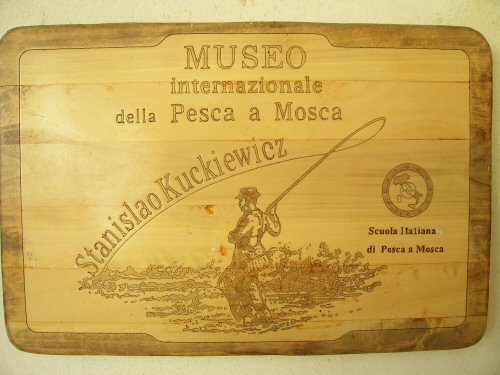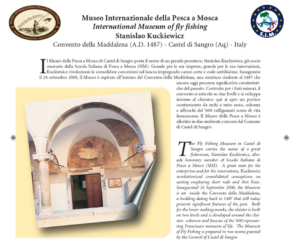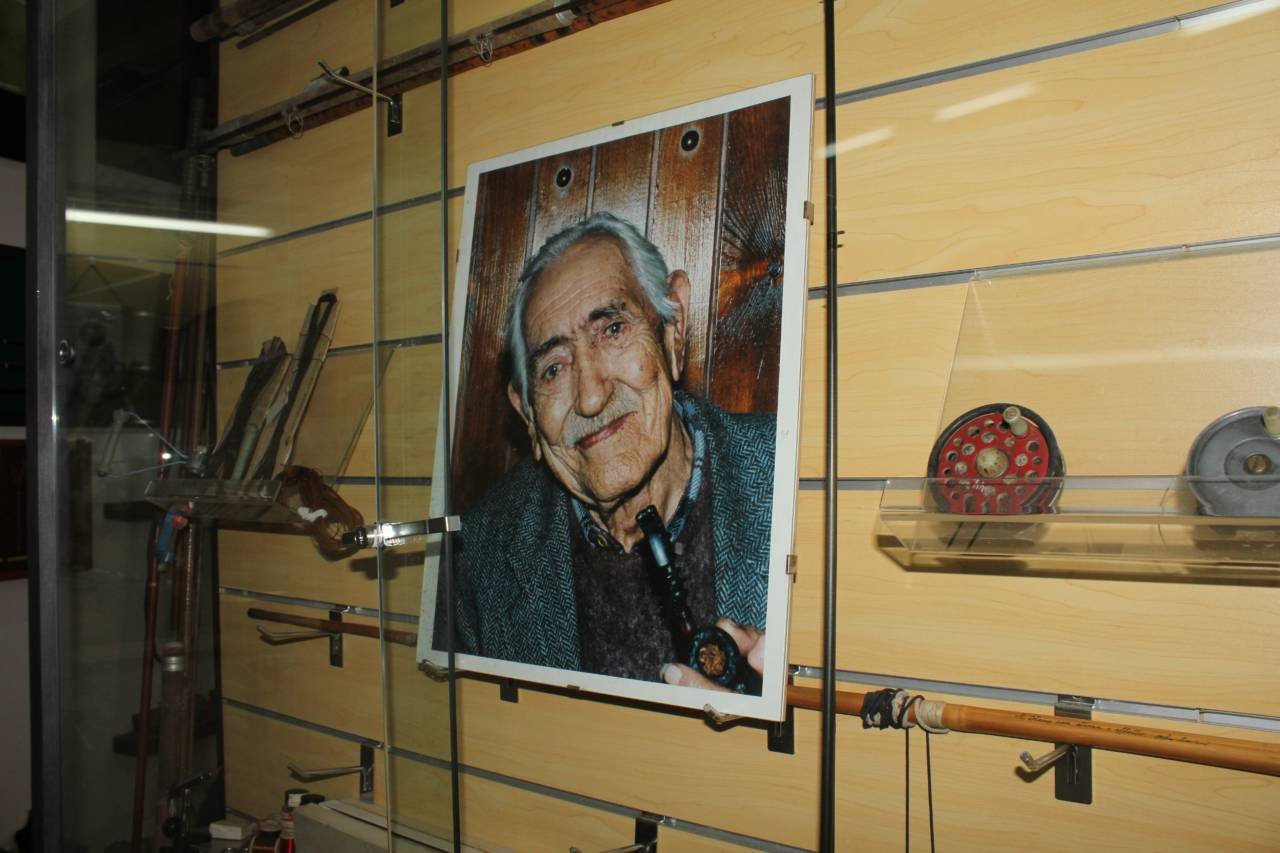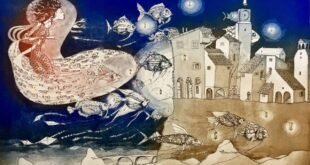Dall’esilio in Siberia all’invenzione del cucchiaino “Martin”
Nasce il 22 Febbraio 1909 a San Pietroburgo, sotto il segno dello Zar Nicola II ma di genitori Polacchi, il padre studia ingegneria al politecnico di quella città e acquisisce così la cittadinanza Polacca.
Fin dalla tenera età di 5 anni comincia ad andare a pescare (e a cacciare) con il padre.
Dopo i primi anni trascorsi in Russia nel 1911 rientra in Polonia, a Lodz dove il padre fa l’ingegnere.
Nel 1914, allo scoppio della prima guerra mondiale mentre il padre sta al fronte, Stany insieme al fratello maggiore e alla madre fugge in Russia dietro la spinta delle truppe tedesche.
Nel 1919, ad appena 10 anni, inizia a pescare e lo fa in modo del tutto particolare: completamente isolato dalle influenze anglosassoni incomincia a scoprire ed inventare una pesca a mosca e a spinning osservando intensamente la natura e il comportamento dei pesci.
Vedendo i pesci bollare, iniziò a pensare che poteva catturarli imitando gli insetti di cui si cibavano. Il suo più grande desiderio era di poterlo fare senza collegamento con l’esca, quasi per magia.
A 15 anni cominciò a pescare con la canna da mosca vera e propria, inizialmente con canne in bamboo di provenienza anglosassone e successivamente con canne in fibra di vetro di provenienza tedesca. In questo periodo inizia la sperimentazione di esche fatte con materiali particolari, sia da mosca che da spinning.
Dopo il ginnasio frequenta i primi due anni di medicina, si iscrive successivamente a legge ma lo scoppio della seconda guerra mondiale ne interrompe gli studi costringendolo a partecipare alle vicende belliche dell’esercito polacco.
In quell’ anno viene fatto prigioniero dai sovietici con tutta la famiglia, compresa la prima moglie che morirà poco dopo a Leopoli di parto insieme alla bambina. Appartenente ad una agiata famiglia di proprietari terrieri, Stany, dopo una breve parentesi di libertà, viene nuovamente arrestato e, riconosciuto dal potere stalinista come “nemico del popolo”, viene deportato nella regione siberiana del Kazakistan, dove sopravvive fino all’autunno del 1942 facendo il cacciatore di professione e il medico.
In quell’anno riesce avventurosamente a fuggire assieme ad altri cinque compagni di prigionia con un odissea di oltre 3000 km, quasi tutti a piedi che lo portano dai confini della Mongolia estrema alle rive del Mar Caspio, dove si unisce al II corpo d’armata polacco. Poi assieme all’esercito inglese giunge in Persia quindi attraverso numerosi paesi del Medioriente in Egitto e infine nel Natale del ’43 sbarca in Italia dove partecipa alla battaglia di Montecorsino e sempre a fianco dell’esercito inglese combatte su tutto il fronte di liberazione adriatico fino a Bologna. Dopo la fine dei conflitti finalmente si dedica alla sua passione ed inizia la creazione di esche artificiali, sperimentazioni che lo porteranno all’invenzione e al deposito del brevetto del Cucchiaino “Martin”, l’esca da spinning più usata di tutti i tempi.
Oltre al “Martin” Stany lavora su altri meccanismi (non depositati) che successivamente si vedranno su cataloghi di molte aziende importanti, come le sue famose imitazioni di rane di resina, stracopiate successivamente da molte aziende americane. Altri studi importanti lo portano alla creazione di code in seta per la pesca a mosca. Code leggerissime usate con canne da lui modificate, una tecnica di pesca che sfocerà più avanti nel moderno TLT. Gli ultimi anni della sua vita, a Fermo nelle Marche, ha vissuto con modestia e in modo schivo, continuando con le sue sperimentazioni, le sue geniali imitazioni, la scuola di lancio e la sua piccola industria per la produzione di imitazioni di plastica. A Lui viene dedicato il museo italiano della pesca a mosca , inaugurato ufficialmente il 24 settembre 2000 a Castel di Sangro all’interno del Convento della Maddalena, una struttura risalente al 1487. Questo progetto nasce da una collaborazione della Scuola Italiana di Pesca a Mosca, il Comune di Castel di Sangro e alla sua realizzazione hanno contribuito l’Associazione Pescasportivi di Castel di Sangro, l’Archeoclub d’Italia sezione di Castel di Sangro e Cavatorti Giorgio, attuale direttore del museo.
——————————————– english ———————————————-
From the Siberian exile to the invention of the “Martin” spoon
He was born the 22th February 1909 in Saint Petersburg, under the reign of the czar Nicola II, but his parents were Polish, his father studied engineering at the polytechnic institute of that city and, for this reason, he had the Polish citizenships.
Since he was 5 years old he went fishing (and hunting) with his father.
After some years spent in Russia, in 1911 he returned to Poland, to Lodz, where his father was working as engineer.
In 1914, when the first World War started, while his father was fighting at the front, Stany together with his elder brother and his mother escaped to Russia.
In 1919, when he was just 10, he started to fish in a very particular way: completed isolated from the Anglo-Saxon influences he began to discover and invent a new type of fly and spinning fishing technique only observing intensely nature and fish behavior.
As he saw fish rising, he thought that he could catch them imitating the insects that they ate. His biggest desire was catching them without the help of a lure, as it was magic.
When he was 15, he started to fish with a real fly rod, at the beginning with bamboo rods which came from England, and then with glass fibre rods from Germany. In that period he started to create lures made with particular materials, both for fly fishing and spinning.
After the high school, he attended the first two years of medicine, then he enrolled at Law but the beginning of the Second World War interrupted his studies, forcing him to take part in the war with the Polish army.
During that year he was captured by Russians with all his family, included his first wife who would die some time later in Leopoli when she gave birth to their daughter. Stany belonged to a well-off family of landowners and, after a short interval of freedom, he was arrested again because the Stalinist government believed that he was a “people’s enemy”, so he was deported to the Siberian region of Kazakhstan, where he survived until the fall of 1942, working as professional hunter and doctor.
He could adventurously escape that year together with other five prisoners, walking for more than 3000 km from the borders of Mongolia to the shores of the Caspian Sea, where he joined to the Polish army. Then, together with the English army he reached Persia, then he crossed many Middle-East countries until Egypt and in the end, in December 1943, he landed in Italy where he took part in the Montecorsino battle and, always with the English army, he fought at the front until Bologna. After the end of the war he finally devoted himself to his passion and he started to create artificial lures, experiments that will lead him to the invention and the patent of the “Martin” spoon, the most used spinning lure in the world.
Besides the “Martin”, Stany worked on other experiments (not taken out) that then will be seen on the catalogues of many important companies, as his famous imitations of resin frogs, which will be copied by many American companies. Other important studies led him to the creation of silk tails for fly fishing. They are very light tails used with modified rods, a fishing technique that will become the modern TLT. He spent modestly and shyly the last years of his life in Fermo, in the Marches region, continuing his experiments, his brilliant imitations, his casting school and his small company for the production of plastic imitations. The Italian fly fishing museum, inaugurated to him the 24th September 2000 in Castel di Sangro inside the Maddalena Convent, is dedicated to him. This project was born from the collaboration of the Italian Fly Fishing School and the Castel di Sangro municipality, and it was realized by the Association “Pescasportivi” in Castel di Sangro, the “Archeoclub d’Italia”, section of Castel di Sangro and Cavatorti Giorgio, expert of the field and present director of the museum.
 Scuola Italiana di Pesca a Mosca – S.I.M. – Corsi di Pesca a Mosca per principianti ed esperti – Corsi di apprendimento, perfezionamento e stage per Istruttori
Scuola Italiana di Pesca a Mosca – S.I.M. – Corsi di Pesca a Mosca per principianti ed esperti – Corsi di apprendimento, perfezionamento e stage per Istruttori







